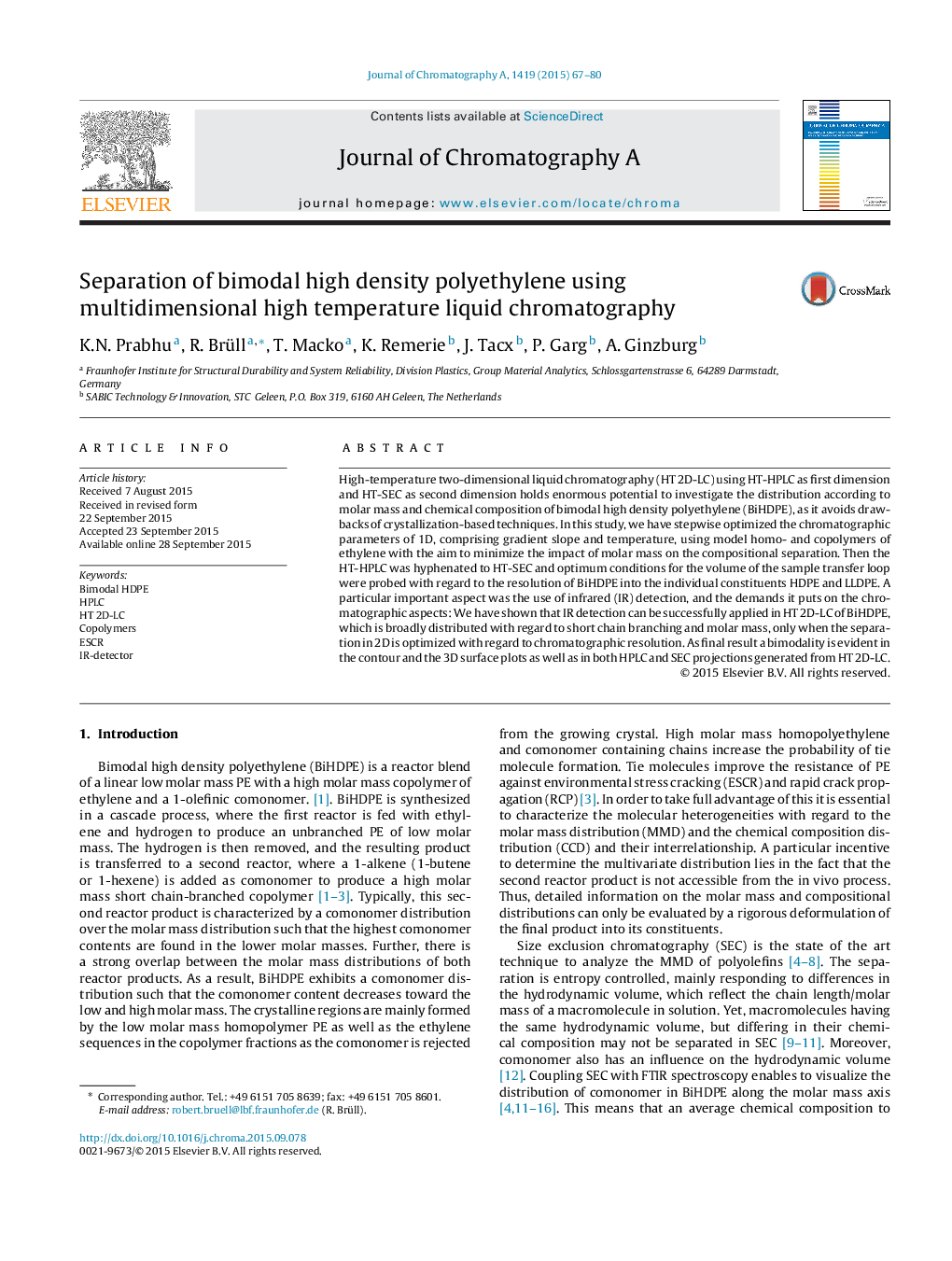| Article ID | Journal | Published Year | Pages | File Type |
|---|---|---|---|---|
| 1198752 | Journal of Chromatography A | 2015 | 14 Pages |
Abstract
High-temperature two-dimensional liquid chromatography (HT 2D-LC) using HT-HPLC as first dimension and HT-SEC as second dimension holds enormous potential to investigate the distribution according to molar mass and chemical composition of bimodal high density polyethylene (BiHDPE), as it avoids drawbacks of crystallization-based techniques. In this study, we have stepwise optimized the chromatographic parameters of 1D, comprising gradient slope and temperature, using model homo- and copolymers of ethylene with the aim to minimize the impact of molar mass on the compositional separation. Then the HT-HPLC was hyphenated to HT-SEC and optimum conditions for the volume of the sample transfer loop were probed with regard to the resolution of BiHDPE into the individual constituents HDPE and LLDPE. A particular important aspect was the use of infrared (IR) detection, and the demands it puts on the chromatographic aspects: We have shown that IR detection can be successfully applied in HT 2D-LC of BiHDPE, which is broadly distributed with regard to short chain branching and molar mass, only when the separation in 2D is optimized with regard to chromatographic resolution. As final result a bimodality is evident in the contour and the 3D surface plots as well as in both HPLC and SEC projections generated from HT 2D-LC.
Keywords
Related Topics
Physical Sciences and Engineering
Chemistry
Analytical Chemistry
Authors
K.N. Prabhu, R. Brüll, T. Macko, K. Remerie, J. Tacx, P. Garg, A. Ginzburg,
